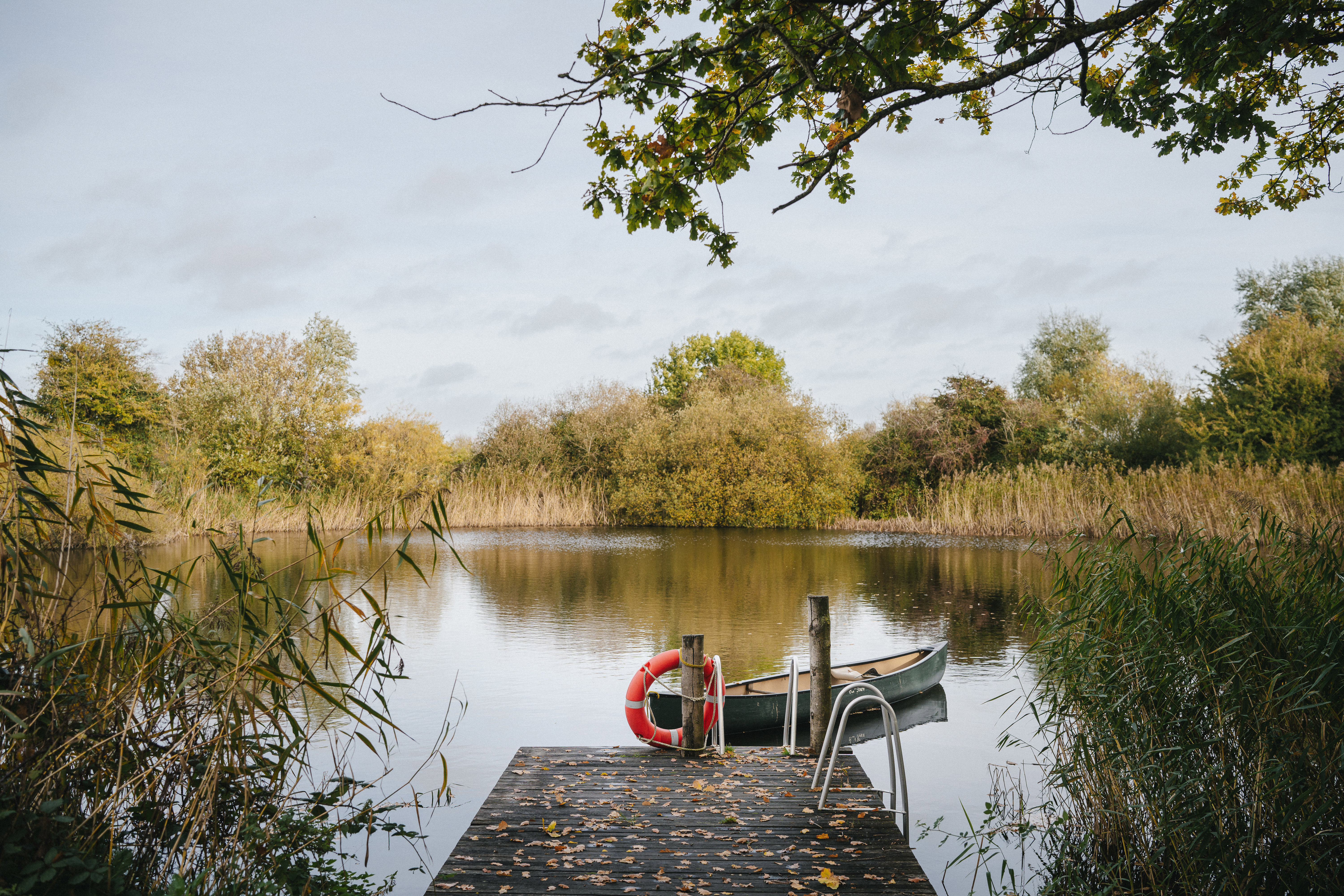Taking the plunge, the benefits of wild swimming

Wild swimming has become a popular wellness trend recently, with many people feeling that they would like to try it, without knowing exactly why so many people rave about it.
We’ve touched on the restorative effects of nature before, which is particularly important when you consider in 2019 an estimated 970 million people worldwide suffered from a mental disorder (University of Washington, 2019), and that those figures were worsened dramatically by the Covid-19 pandemic (World Health Organisation, 2022). Exercising in nature is suggested to have a more significant positive impact on energy levels, depression reduction and mental health than exercising indoors (Mitchell, 2013).
Cold water swimming has many health benefits, and these are only amplified when combined with the heat of the sauna, which has positive effects on the cardiovascular system - which has been the primary focus of research - but also the endocrine system, nervous system and mental health.
The science behind wild swimming
Alternating between hot and cold temperatures constricts and dilates blood vessels, maximising circulation, reducing inflammation and speeding up muscle repair (Hussain & Cohen, 2018). This vasodilation and vasoconstriction may also contribute to reduction in both short term and chronic pain. The heat from the sauna increases heart rate variability and improves circulation, much in the same way that cardio exercise does. A 2022 study concluded that when combined with exercise, use of sauna improved cardiorespiratory fitness, decreased systolic blood pressure and lowered total cholesterol levels (Pilch, et al., 2014) (Lee, et al., 2022).
Both saunas and cold plunges trigger release of neurotransmitters such as serotonin: our 'happy hormone'; dopamine: our 'feel good' hormone; norepinephrine, which regulates cognitive function and stress reactions, and b-endorphins (Hirvonen, Lindeman, Joukamaa, & Huttunen, 2002) which are the body’s natural painkillers. Deficits in these neurotransmitters are critical factors in the development of psychiatric disorders such as depression and anxiety.
Neurotransmitters aside, many people find that cold water swimming has a meditative effect, allowing the swimmer to be wholly present both in their bodies and nature. Many people describe it as 'quieting the noise”' which is hugely beneficial in our 'always on' society.
Cold plunging also stimulates the vagus nerve, which is the main nerve in the parasympathetic nervous system, otherwise known as ‘rest and digest’ state (Jungmann, Vencatachellum, Van Ryckeghem, & Vogele, 2018). We should be in our parasympathetic state the majority of the time, however the stresses of modern life often tip us into our sympathetic ‘fight and flight’ state. Regular cold water swimming can train the vagus nerve, making it easier to regain rest and digest state after a period of stress.
Socially the benefits of wild swimming and sauna are incomparable, hence it being championed in different cultures around the world: saunas in Scandinavia, onsens in Japan and hammams in the Muslim world are all a social and wellness hub integral to the routine and culture of these societies.
If you want to experience the joy and numerous benefits of wild swimming and sauna at Elmore, the estate hosts Sarah Guise's Rewild Swim Club which is open both to treehouse guests - through private appointment - and to the public on allotted session times, that must be booked in advance as places are limited.
References and further reading...
Hirvonen, J., Lindeman, S., Joukamaa, M., & Huttunen, P. (2002). Plasma catecholamines, serotonin and their metabolites and beta-endorphin of winter swimmers during one winter. Possible correlations to psychological traits. International Journal of Circumpolar Health. Hussain, J., & Cohen, M. (2018). Clinical Effects of Regulart Dry Sauna Bathing: A Systematic Review. Evidence-Based Complementary and Alternative Medicine. Jungmann, M., Vencatachellum, S., Van Ryckeghem, D., & Vogele, C. (2018). Effects of Cold Stimulation on Cardiac-Vagal Activation in Healthy Participants: Randomised Controlled Trial. JMIR Formative Research. Lee, E., Kolunsarka, I., Kostensalo, J., Ahtainen, J. P., Haapala, E. A., Willeit, P., . . . Laukkanen, J. A. (2022). Effects of regular sauna bathing in conjunction with exercise on cardiovascular function: a multi-arm, randomised controlled trial. American Journal of Physiology: Regulatory, integrative and comparative physiology. Mitchell, R. (2013). Is physical activity in natural environments better for mental health than physical activity in other environments? . Social Science & Medicine. Pilch, W., Tyka, A., Palka, T., Lech, G., Cison, T., & Kita, B. (2014). Effect of 30-minute sauna sessions on lipid profile in young women. Medicina Sportiva. University of Washington. (2019). Institute of Health Metrics and Evaluation. Washington: Global Health Data Exchange. World Health Organisation. (2022, March 2). COVID-19 pandcemic triggers 25% increase in prevalence of anxiety and depression worldwide. Retrieved from World Health Organisaton: who.int




